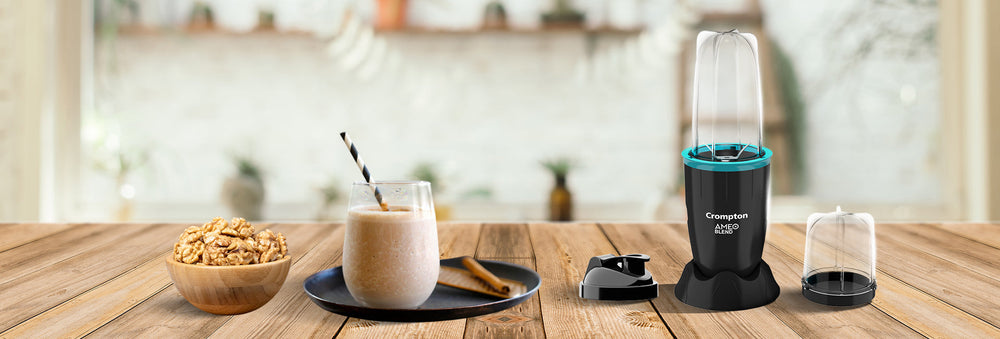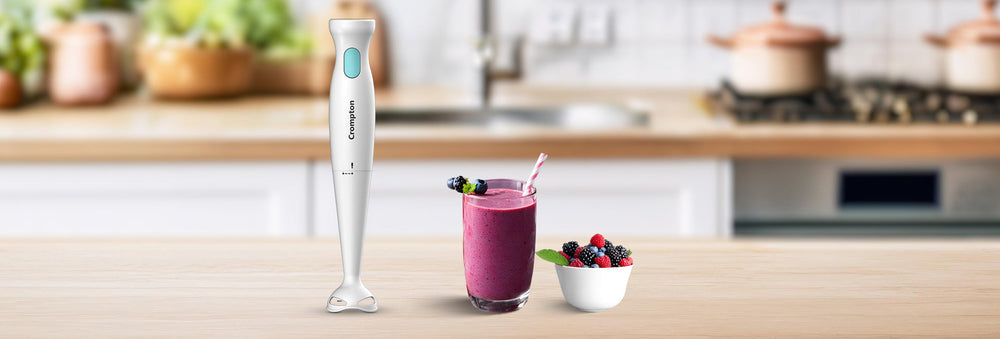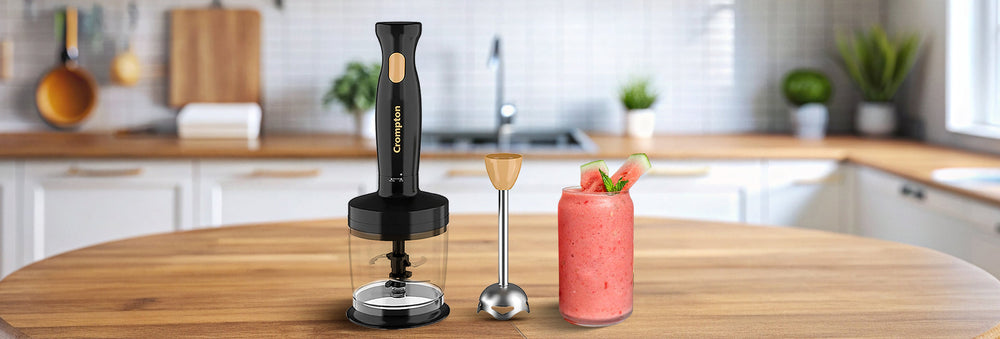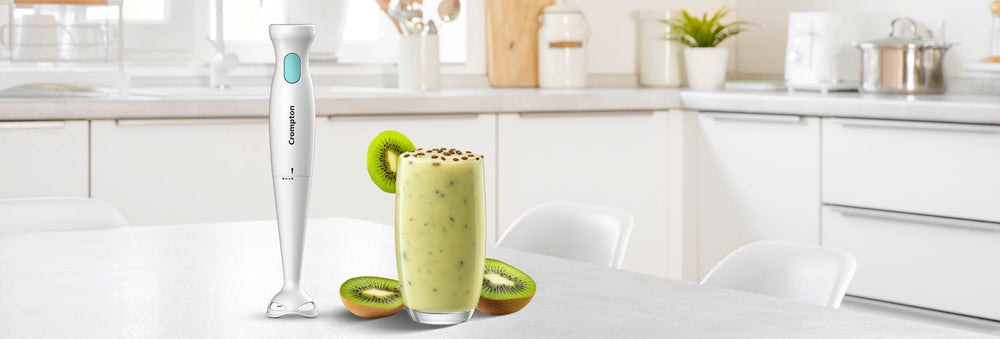How Do You Use An Electric Kettle?


Electric kettles have become a quintessential kitchen device for numerous homes globally. They offer a swift and convenient method to boil water for a variety of uses, including brewing tea and coffee and also preparing quick meals like instant noodles. However, as with any electrical gadget, it's crucial to utilise an electric kettle with caution and efficiency, not only for ease but also for your safety. This guide will provide you with steps and measures for the safe and efficient use of an electric kettle.
How to Use an Electric Kettle?
When using an electric kettle, it is vital to follow certain steps to ensure both safety and efficiency. Here's a guide on how to use a water kettle in your daily routine:
Step 1: Filling the kettle
Open the lid and fill the kettle with the required amount of water. Avoid overfilling to prevent spilling when boiling. However, make sure the water exceeds the minimum level mark. Both underfilling and overfilling the kettle can lead to electrocution, melted plastic or fire.
Step 2: Positioning the kettle
Place the kettle on its base correctly and ensure it's connected to a power source. Ensure the kettle is placed on a steady and horizontal surface. Since the kettle releases steam, it should be placed in a relatively open space on your kitchen countertop. You can store the kettle in a cabinet once it’s completely dry.
Step 3: Turning on the kettle
Switch on the kettle. For models with temperature settings, select the desired temperature. The button to turn on the kettle is typically placed on or underneath the handle.
Step 4: Wait for the water to boil
Modern-day electric kettles can boil the water in a few minutes. Most electric kettles will shut off automatically once boiling is achieved.
Step 5: Pouring
Once the water has boiled, carefully pour it into your cup or pot, keeping your hand clear of the steam.
Things To Look Out For When Buying An Electric Kettle
Why opt for an electric kettle? Before we dive into the nuances of how to use an electric kettle safely, let's consider why you might favour one over the traditional stovetop kettles:
- Speed: Electric kettles are remarkably rapid; they boil water in just a few minutes. This quickness is particularly beneficial considering our busy schedules.
- Energy efficiency: Electric kettles consume relatively less energy compared to stovetop kettles, positioning them as a more environmentally friendly option.
- Safety: Contemporary electric kettles are equipped with various safety mechanisms, like automatic shut-off when water reaches its boiling point, minimising accident risks.
- Convenience: Electric kettles are straightforward to operate and maintain. Many models come with additional features such as temperature control and keep-warm functions.
Factors to Consider When Buying a Kettle
As you can see, using a kettle is quite straightforward. Keep the following things in mind when buying one:
- Capacity: This is a vital aspect of any kettle. The ideal size varies based on individual use, with most kettles offering capacities ranging from 0.5 to 1.8 litres.
- Heating performance: The efficiency of heating is crucial. A kettle that takes too long to boil water defeats its purpose. Electric kettles typically have power ratings between 750 watts and 1500 watts, so choose one that aligns with your requirements.
- Body construction: Safety is paramount, especially when handling hot liquids. Opt for a kettle with robust insulation and sturdy handles to ensure safe use.
- Price: Prices vary widely based on features and quality. You can find a range of options to suit different budgets.
Uses Of Electric Kettle
Kettles come in different types. Here’s what you can do with these kettles:
-
Brewing tea
A prime application of the electric kettle is for brewing an impeccable cup of tea. To extract the finest flavour from your brew, it's essential to heat the water to precise temperatures. For instance, green tea is best brewed with water at about 175°F (80°C), whilst black teas flourish at approximately 212°F (100°C). Once your water reaches the requisite temperature, steep your tea bags or leaves. The duration of steeping varies across different teas, and you may adjust it to suit your taste preference and desired strength. -
Brewing coffee
First, verify if your kettle permits in-kettle brewing. If not, heat water and then utilise it to infuse your coffee. For a pour-over coffee, warm the kettle first, then add your coffee grounds. Let the coffee steep for a short period before savouring a freshly brewed cup. -
Boiling vegetables and eggs
A versatile electric kettle can be employed for boiling vegetables or eggs. Chop your vegetables and fill the kettle to the necessary water level. Immerse the vegetables or eggs in the water and turn on the kettle. Once completed, drain the water and use the vegetables or eggs as needed. -
Making rice or instant noodles
A utility of the kettle is in preparing instant noodles, especially for late-night cravings. Fill the water kettle to the required level, add instant noodles and the seasoning, and boil until ready. You can also use the kettle to cook a perfect bowl of steamed rice, which pairs delightfully with dal or vegetables.
Things To Remember While Using Your Electric Kettle
When employing any appliance, it's crucial to familiarise yourself with the owner’s manual and adhere to basic safety guidelines. Here are some tips for how to use an electric kettle safely:
- Avoid overfilling your kettle. Heed the maximum fill indicators.
- Never submerge the base, cord, plug, or the body of the kettle in water or other liquids.
- Always unplug the kettle from the socket when not in use and prior to cleaning.
- Consult your owner’s manual for further safety advice.
- Refrain from adding any liquids other than water, unless the manual explicitly allows it.
- Exercise caution while pouring. Pour gently to prevent splashing of boiling water.
Keep These Precautions In Mind
Though electric kettles are safe and effective, their longevity is significantly influenced by how well they are maintained. Here are some precautions to extend the life of your kettle:
- Clean regularly: Regularly wash your kettle with warm water and vinegar to prevent limescale accumulation.
- Avoid water storage: It's advisable not to leave water in the kettle for extended periods as this can lead to limescale formation.
- Boil only what you need: Overburdening the heating coil by boiling more water than necessary can wear it down prematurely.
- Never run empty: Operating an empty kettle can damage the heating elements and reduce the lifespan of your appliance.
About Crompton’s Electric Kettles
Crompton's electric kettles, known for their advanced features, enhance user experience in the kitchen. Their kettles include a 'Cool Touch Body', ensuring the exterior remains safe to touch while boiling water. They also offer a convenient one-touch open-lid feature, reducing the risk of burns when opening the kettle. Additionally, select models like the DeluxeHot that come with built-in mesh filters ideal for straining teas and other infused beverages directly from the kettle. The design also prioritises easy cleaning, with wider mouths for easy access and durable, stain-resistant materials like Borosilicate glass, simplifying maintenance.
Takeaway
Electric kettles are a staple in modern kitchens, offering a quick and energy-efficient way to boil water for various needs. To ensure safety and prolong their lifespan, it's important to use them correctly - avoid overfilling or underfilling, never submerge in liquids, and always unplug after use. Regular cleaning and boiling only the necessary amount of water will also help maintain your kettle's performance and prevent limescale buildup.
FAQs On How To Use An Electric Kettle
-
How long does it take for an electric kettle to boil water?
An electric kettle typically takes between 2 to 4 minutes to boil water, depending on the amount. The reason for its speed is that it prevents heat from escaping, allowing for quicker boiling compared to a stove. -
What is the ideal size for an electric kettle?
The size of an electric kettle should correspond to the number of users. For example, a 1-litre kettle is suitable for two people. For more users, a 1.2 to 1.5-litre kettle would be more appropriate. -
How can I use an electric tea kettle?
Once the water boils in the electric kettle, you can add tea leaves and make tea. Ensure that you allow the tea to infuse. -
Does leaving a kettle plugged in consume electricity even if it’s turned off?
Yes, leaving a kettle plugged in consumes a small amount of electricity even when not in use.

 Read Previous Blog
Read Previous Blog



 at 9228880505 or write to us at
at 9228880505 or write to us at 